BC547 Transistor Price Guide: Understanding Costs & Optimizing Your Purchase
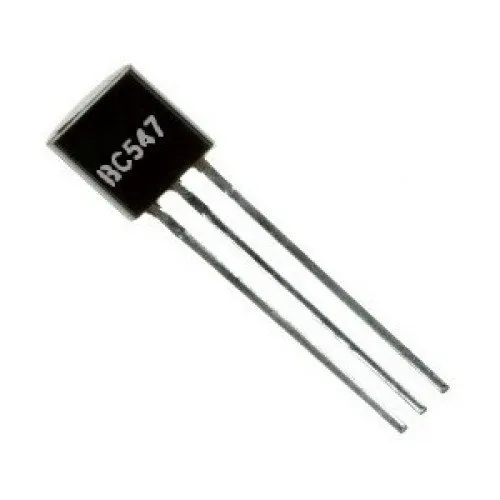
In the world of electronics, the BC547 transistor is a workhorse, often used in countless circuits. Like the cost of ingredients in cooking, the BC547 transistor price directly impacts project budgets and availability. This article delves into the factors influencing the cost of a BC547 transistor, from single units to bulk buys, helping you understand the market and make smart purchases. We'll demystify pricing variances and offer tips for getting the best deals, ensuring your projects stay on track and within budget.
Factors Influencing BC547 Transistor Price

The cost of a BC547 transistor is not fixed and is subject to several influencing factors, which can significantly alter the final price. Understanding these variables is crucial for purchasers seeking to optimize costs and make informed decisions. The key determinants include the quantity of transistors purchased, the source of the supplier, the brand's reputation, and the specific variant of the BC547 transistor.
- Quantity Purchased
Unit pricing is heavily influenced by the volume of transistors purchased. Bulk orders typically yield lower per-unit costs due to economies of scale. - Supplier Source
Prices vary considerably depending on whether the transistors are purchased from major distributors, online marketplaces, or smaller local retailers. Direct manufacturers may offer lower prices for very large purchases, while distributors add markup for their services. - Brand Reputation
Transistors from well-known and reputable brands often command higher prices due to their perceived reliability and quality. Lesser known or generic brands may offer cheaper alternatives, but may come with higher variability in performance and quality - Specific Grade/Variant
The BC547 transistor is available in different grades (BC547A, BC547B, BC547C), each with slight variations in gain characteristics. These variations affect the transistor's performance and may also lead to price differences.
| Factor | Impact on Price | Considerations |
|---|---|---|
| Quantity | Inverse Relationship (Higher quantity, lower unit price) | Plan for projects requiring multiple transistors, potential savings on bulk orders |
| Supplier | Variable (Major distributors, marketplaces, local retailers) | Compare prices across multiple vendors, weigh convenience against cost savings |
| Brand | Higher for reputable brands | Determine if brand quality justifies the price increase, consider lower cost alternatives |
| Grade/Variant | Slight variations (A, B, C) | Ensure the correct grade is selected for the application, compare prices of each grade |
In summary, when purchasing BC547 transistors, carefully consider each of these elements to maximize cost-effectiveness and ensure you obtain the appropriate components for your application. The price is a result of the complex interplay between these factors, making informed decision making essential.
Comparing Prices Across Major Suppliers
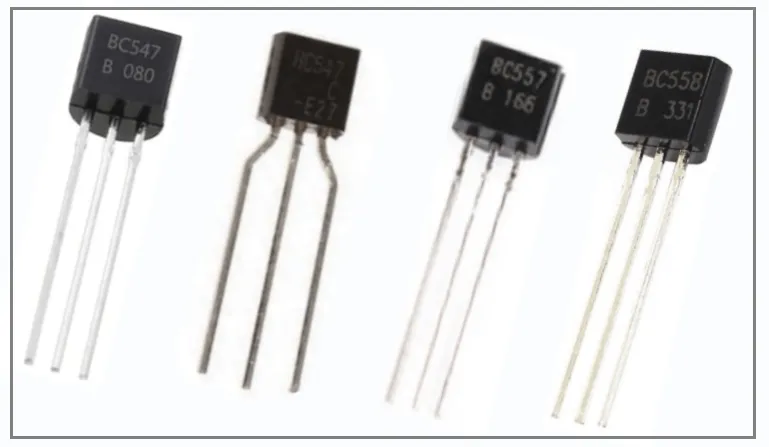
The price of BC547 transistors can vary significantly across different online suppliers. This section provides a comparative overview of pricing from major retailers such as Amazon, eBay, AliExpress, Mouser, and Digikey, highlighting the factors contributing to these fluctuations and offering insights for securing cost-effective purchases.
| Supplier | Typical Price Range (USD per unit) | Notes |
|---|---|---|
| Amazon | $0.05 - $0.20 | Prices vary based on seller, quantity, and shipping; tends to have wide range |
| eBay | $0.03 - $0.15 | Often includes used components; careful review of seller is important; varied pricing based on sellers |
| AliExpress | $0.02 - $0.10 | Typically offers lower prices, but shipping times can be longer; tends to be better for larger quantities |
| Mouser | $0.10 - $0.30 | Authorized distributor; tends to be more expensive; known for high-quality components; good for reliable sources |
| Digikey | $0.10 - $0.35 | Authorized distributor; tends to be more expensive; known for high-quality components; good for reliable sources |
Several factors contribute to the price differences observed across these suppliers, including:
- Stock Availability
Limited stock or high demand can drive prices up. - Shipping Costs
Shipping fees from different suppliers can add significantly to the overall cost; free shipping options can impact total cost - Currency Exchange Rates
Fluctuations in currency exchange rates can influence the cost, especially when purchasing from international suppliers. - Supplier Type
Authorized distributors often have higher prices due to higher quality and reliability while platforms with many sellers may be more price competitive.
It's important to note that prices can change rapidly. Regularly checking these suppliers, comparing total costs (including shipping), and planning for your project well in advance can result in significant savings.
Bulk Purchase vs. Individual Unit Cost of a BC547 Transistor
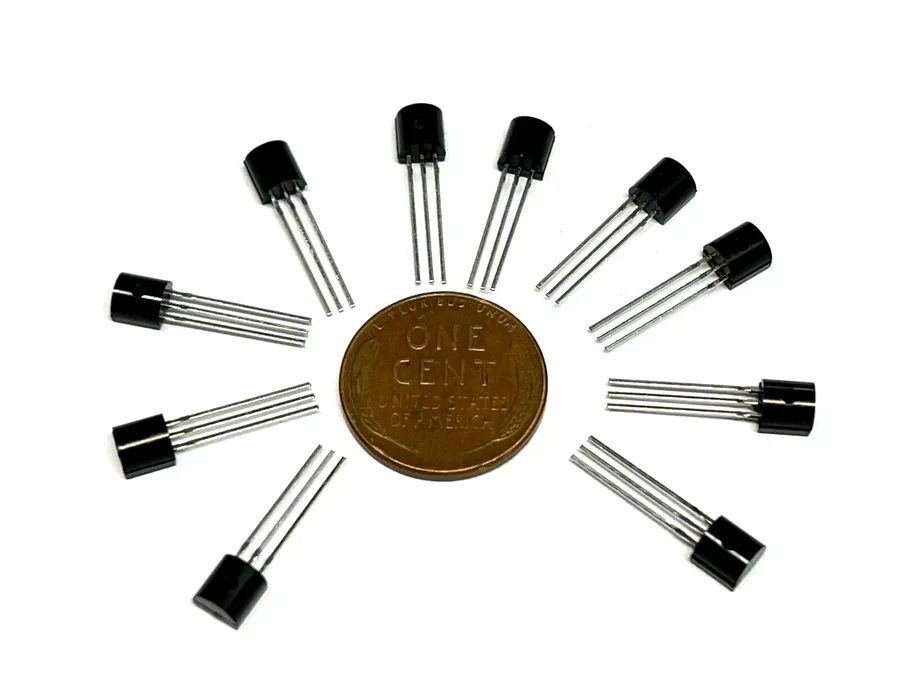
The per-unit cost of a BC547 transistor significantly decreases when purchased in larger quantities. This section details the cost benefits of bulk purchasing, providing insights into typical pricing tiers and strategies for optimizing your expenses based on your project requirements.
For electronics projects that require multiple BC547 transistors, buying in bulk is often more economical. The pricing structure generally follows a tiered system, offering substantial discounts as the quantity increases. Understanding these tiers allows for better budget management and cost optimization.
| Quantity | Approximate Price Per Unit (USD) | Notes |
|---|---|---|
| 1-9 | $0.10 - $0.25 | Individual or small project purchases; highest per-unit cost. |
| 10-99 | $0.05 - $0.15 | Small bulk purchases; moderate per-unit cost reduction. |
| 100-499 | $0.02 - $0.10 | Typical bulk purchase for medium-sized projects; significant per-unit cost reduction. |
| 500+ | $0.01 - $0.05 | Large bulk purchases; lowest per-unit cost, suitable for large-scale production. |
The specific price per unit will vary based on the supplier, brand and any additional features. However the table provides a general idea of the price breaks with increased quantities
- Estimating Your Needs:
Before making a bulk purchase, it is crucial to accurately estimate the number of BC547 transistors you need for your project. Overestimating could lead to unnecessary inventory, while underestimating could result in additional small purchases at higher costs. Consider future projects to buy the appropriate amount for all projects. - Planning for Future Projects:
If you foresee using BC547 transistors in multiple projects, it may be prudent to buy in bulk now. This ensures you have parts on hand and avoid future small purchases at higher per-unit costs. - Inventory Management:
When purchasing in bulk, implement a clear system for storing and retrieving the transistors. Proper inventory management prevents damage and ensures parts are easily accessible when needed.
Understanding BC547 Variants: A, B, and C
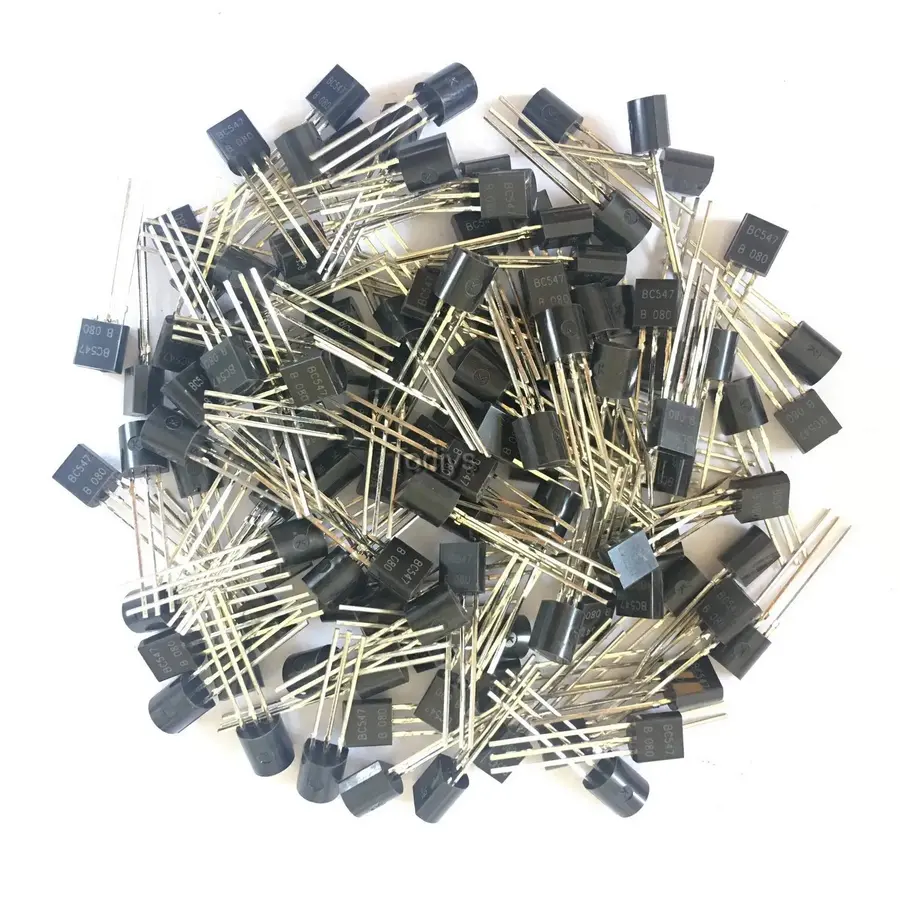
The BC547 transistor is not a single monolithic device; it comes in different gain classifications designated by the suffixes A, B, and C. These variants exhibit varying current amplification capabilities, influencing their suitability for different applications and, potentially, their price. Understanding these differences is crucial for selecting the correct BC547 variant for your specific needs.
| Variant | Typical hFE (Current Gain) | Application Considerations | Price Impact |
|---|---|---|---|
| BC547A | 110-220 | Lower gain applications; may be preferred for stability. | Generally the lowest of the variants, but may also be the least available |
| BC547B | 200-450 | General-purpose applications; most widely used variant. | Often the most common variant; price point is usually average |
| BC547C | 450-800 | Higher gain applications; may be chosen when driving higher loads. | Typically the most expensive among the three |
The 'hFE' parameter, often referred to as the forward current gain, defines how much the transistor amplifies the input current. It is crucial to understand that the given values are typical and that there is a variance in hFE values among individual transistors within a variant. For applications that demand a specific gain value or require tight tolerances, it is necessary to select transistors that meet the requirements, or implement circuit designs with gain calibration options.
When selecting a BC547 variant, consider the following factors:
- Gain Requirements
Determine the amount of current amplification required by your circuit. If you need to drive a higher load, the BC547C variant may be suitable. For general-purpose amplification, the BC547B might be adequate. - Circuit Stability
In some circuits, excessive gain can lead to unwanted oscillations or instability. In these cases, the BC547A may be preferred. - Availability and Price
The price and availability of different variants may vary across suppliers. Be sure to compare prices and select the variant that suits your budget and application needs - Datasheet Verification
Always refer to the manufacturer's datasheet for accurate specifications and tolerances, and to make sure you've picked a variant that is compatible with your overall design.
BC547 Transistor Datasheet Specifications
The BC547 transistor's datasheet is the definitive source for understanding its electrical characteristics, crucial for determining its suitability in your circuits. This section provides a detailed guide on how to locate and interpret the essential specifications from the datasheet.
Key specifications in the datasheet include:
- Voltage Ratings
Such as Collector-Emitter Voltage (VCEO), Collector-Base Voltage (VCBO), and Emitter-Base Voltage (VEBO). These indicate the maximum voltages the transistor can withstand without damage or breakdown. For the BC547, a typical VCEO might be 45V. - Current Ratings
Including the continuous Collector Current (IC) and Peak Collector Current. These ratings specify the maximum current the transistor can safely handle. A standard BC547 may have a continuous IC of 100mA. - Gain Characteristics (hFE)
Also known as the DC current gain or forward current transfer ratio. This parameter indicates the transistor's amplification capability and is crucial for amplifier circuit design. The BC547 has a gain which varies with the 'A', 'B', or 'C' suffix; for example, BC547A has a lower gain than BC547C. - Power Dissipation
Maximum power the transistor can dissipate as heat. This value ensures you don't exceed the transistor's thermal limits. For BC547, the total power dissipation is about 625mW. - Operating Temperature Range
The range of temperatures within which the transistor will operate reliably, typically -65°C to 150°C.
Where to find the datasheet:
- Manufacturer Websites:
Major manufacturers like ON Semiconductor, STMicroelectronics, and NXP Semiconductors typically host datasheets on their product pages. Search for 'BC547 datasheet' on their websites. - Distributor Websites:
Distributors such as Mouser, Digi-Key, and Farnell often provide links to datasheets within their product listings. This is a convenient way to directly access datasheet. - Online Component Databases:
Websites like Octopart and Alltransistors compile component information and datasheets, making it easier to compare specifications.
Interpreting the datasheet involves paying close attention to the conditions under which parameters are specified, such as ambient temperature and testing voltage. The datasheet typically includes graphs and curves that illustrate the performance of the transistor under different conditions. Understanding these ensures you use the BC547 transistor within its safe operating limits and as intended for optimal circuit operation.
| Parameter | Symbol | Typical Value | Unit |
|---|---|---|---|
| Collector-Emitter Voltage | VCEO | 45 | V |
| Collector Current (Continuous) | IC | 100 | mA |
| DC Current Gain (hFE) | hFE | 110-800 | - |
| Total Power Dissipation | PD | 625 | mW |
BC547 Transistor Equivalents and Substitutes
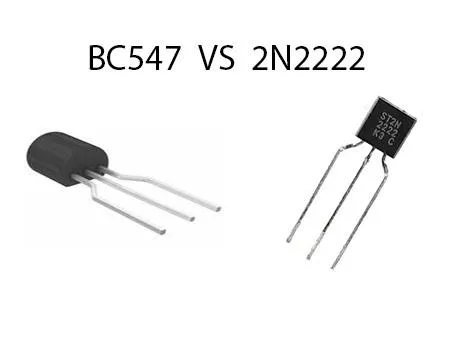
When the BC547 transistor is either unavailable or prohibitively expensive, understanding suitable alternatives is crucial for maintaining project continuity. Several transistors can serve as effective replacements, each with its own specifications and ideal applications.
This section will detail several popular substitutes like the BC548, BC549, and 2N2222, highlighting the differences in their characteristics and appropriate use cases.
| Transistor | Type | Max Collector Current (Ic) | Typical Application | Key Difference from BC547 |
|---|---|---|---|---|
| BC548 | NPN | 100mA | General-purpose amplification and switching | Slightly different hFE ranges |
| BC549 | NPN | 100mA | Low-noise amplifier circuits | Lower noise characteristics |
| 2N2222 | NPN | 800mA | High-current switching and amplification | Higher current handling capability |
- BC548:
The BC548 is a very close substitute for the BC547, sharing similar voltage and current ratings. The primary difference lies in their gain (hFE) ranges, which may necessitate slight adjustments in bias circuitry. Refer to the datasheet to make a suitability check. It is a pin-to-pin replacement in many cases. - BC549:
The BC549 is also quite similar to the BC547 but is specifically designed for low-noise applications. If your circuit is sensitive to noise, the BC549 might be a better alternative, though gain characteristics may vary slightly. - 2N2222:
The 2N2222 is a more robust alternative, able to handle significantly higher currents than the BC547. However, it typically has a lower gain and different pinout compared to the BC547, requiring careful consideration and possibly some redesign in certain circuit applications.
When selecting a substitute, always consult the datasheets of both the original BC547 and the potential replacement to ensure compatibility in terms of voltage, current, and gain requirements. Pin configurations may also vary, requiring modifications in PCB layouts or circuit wiring. It's always best to conduct small-scale testing with the substitute to ensure proper function and stability within your application.
Frequently Asked Questions About BC547 Transistor Pricing and Applications
This section addresses common queries regarding the BC547 transistor, focusing on its uses, alternatives, and the factors contributing to its popularity. Understanding these aspects is crucial for selecting the right component for your electronic projects.
- What are the typical applications of the BC547 transistor?
The BC547 is a versatile NPN bipolar junction transistor (BJT) widely used in general-purpose amplification and switching circuits. Its common applications include signal amplification in audio circuits, acting as a switch for low-power loads (e.g., LEDs or relays), and forming the basis for simple logic gates. It's a go-to component for hobbyists and in educational settings due to its reliability and ease of use. - What are suitable substitutes for the BC547 transistor, and what are their key differences?
Several transistors can substitute the BC547, including the BC548, BC549, and the 2N2222. The BC548 and BC549 are very similar to the BC547, with minor differences in noise characteristics and voltage ratings. The 2N2222, while also an NPN BJT, has a higher current and power rating, making it suitable for higher-power applications, but may require a different bias configuration. - Why is the BC547 transistor so widely used and popular?
The BC547's popularity stems from its cost-effectiveness, wide availability, and general-purpose nature. It is a reliable and robust device suitable for a variety of low-power applications. Its straightforward pin configuration and comprehensive datasheets make it easy to work with, particularly for beginners. The large production volume also keeps its price low and stable. - Can I directly replace a BC547 with a 2N2222 in a circuit?
While both are NPN BJTs, a direct replacement may not always be optimal. The 2N2222 has a higher current carrying capacity and a slightly different gain. It can be used to replace the BC547 but may require adjustments to the biasing circuitry to ensure proper operation and avoid damage, especially in applications that utilize the BC547 at or near its maximum ratings. Always compare datasheets to ensure circuit compatibility. - Does the variant (A, B, or C) of the BC547 significantly impact its performance?
The letters 'A', 'B', and 'C' after the BC547 designation refer to the hFE (current gain) range of the transistor. 'A' has the lowest gain, 'B' has a mid-range gain, and 'C' has the highest gain. While the gain is different, the core functionality remains the same. The choice of variant should align with your circuit's requirements and the amplification needed. A higher gain variant may not always be the best choice. - Where can I find reliable BC547 datasheets for accurate specifications?
Reputable sources for datasheets include the manufacturer's official websites, such as ON Semiconductor or STMicroelectronics, and well-known electronic component distributors like Mouser or Digikey. Ensure that the document you are viewing is indeed for the component you are using (ie. ensure variant is correct), and that the information is up-to-date. Datasheets provide crucial performance data like maximum voltages, currents, and gain parameters. - How does purchasing in bulk affect the cost per unit of BC547 transistors?
Purchasing BC547 transistors in bulk typically leads to a significant reduction in the per-unit cost. This is because suppliers often offer volume discounts. If you are working on a project that requires a large quantity of transistors or you anticipate needing them in the future, purchasing in bulk can result in substantial savings. Always compare bulk pricing across different vendors to get the best deal.
Tips for Finding the Best BC547 Transistor Price
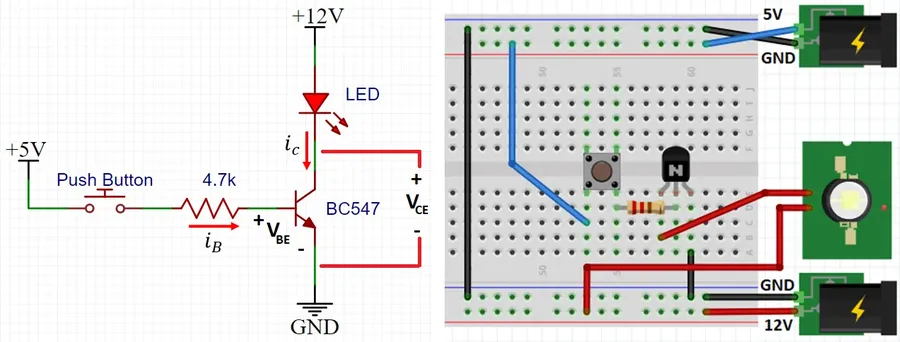
Securing the most cost-effective price for BC547 transistors involves a strategic approach, considering various factors that influence the final cost. This section outlines key tips and tricks to minimize expenses and optimize your purchase.
- Compare Prices Across Multiple Vendors
Actively compare prices from various online retailers like Amazon, eBay, AliExpress, Mouser, and Digikey. Prices can vary significantly between suppliers due to differences in stock, overheads, and promotional offers. - Consider Purchasing in Bulk
Bulk purchasing offers substantial discounts on the per-unit cost of BC547 transistors. Explore different quantity tiers (e.g., 10+, 100+, 500+) to determine the most economical purchase level for your specific project. - Watch for Sales and Promotions
Keep an eye on special sales events and promotional periods, where retailers may offer significant discounts on electronic components. Timing your purchase around these periods can save money. - Explore Reputable Used Component Suppliers
Consider purchasing used components from reputable suppliers. This approach can be more cost effective, especially if component quality and condition are thoroughly checked. Ensure to verify the authenticity and operational functionality of used transistors. - Factor in Shipping Costs
Always include shipping costs in your overall price evaluation. Shipping expenses can vary, and a seemingly cheaper component could become more expensive after adding in shipping fees.
| Strategy | Description | Considerations |
|---|---|---|
| Price Comparison | Check prices across multiple platforms. | Time-consuming, but ensures the best price. |
| Bulk Purchase | Buy in larger quantities. | Suitable for projects needing multiple units. Risk of overstock. |
| Monitor Sales | Wait for promotions or discounts. | Not suitable if components are needed urgently. Can save a large amount. |
| Used Components | Consider reputable second-hand suppliers. | Risk of lower component quality. Ensure the seller offers a return. |
| Shipping | Always include shipping costs. | Shipping costs can add up and increase the final cost. Check delivery times. |
By applying these strategies, you can effectively reduce the cost of BC547 transistors, making your electronic projects more economical without compromising on component quality. Remember to balance cost savings with the reliability and functionality of the purchased components.
The BC547 transistor's affordability and widespread use make it a staple in electronics. By considering the factors discussed above, such as quantity, supplier, and specific variant of the BC547 transistor price , you can make cost-effective purchases for your projects. Whether you need one transistor or hundreds, understanding the market and options available will ensure you are well-equipped for all your electronics needs. Remember to always verify specifications and consider alternatives when needed to keep your projects efficient and within budget, as the BC547 transistor price is an important factor in your final build cost.
 AnyPCBA
AnyPCBA